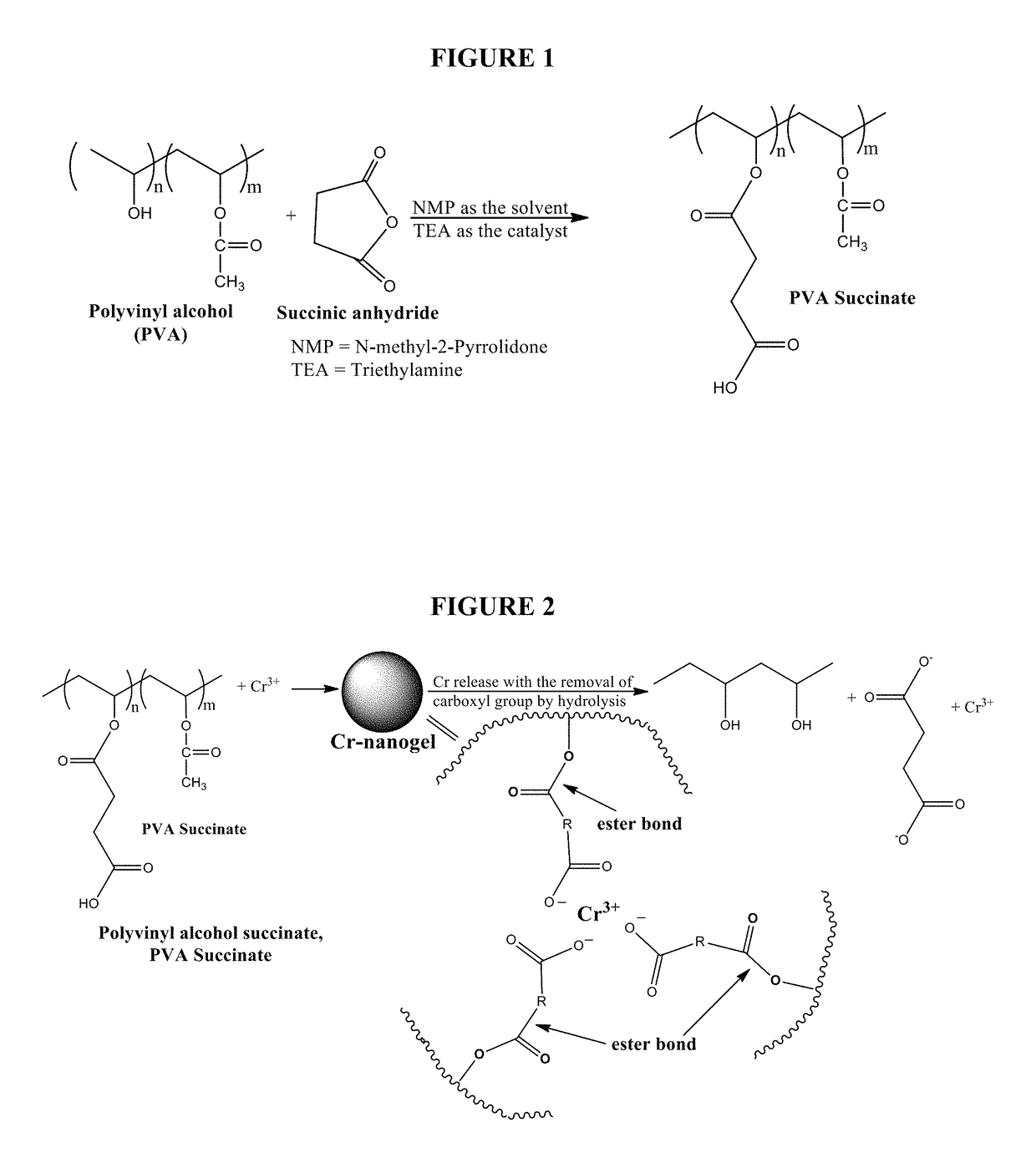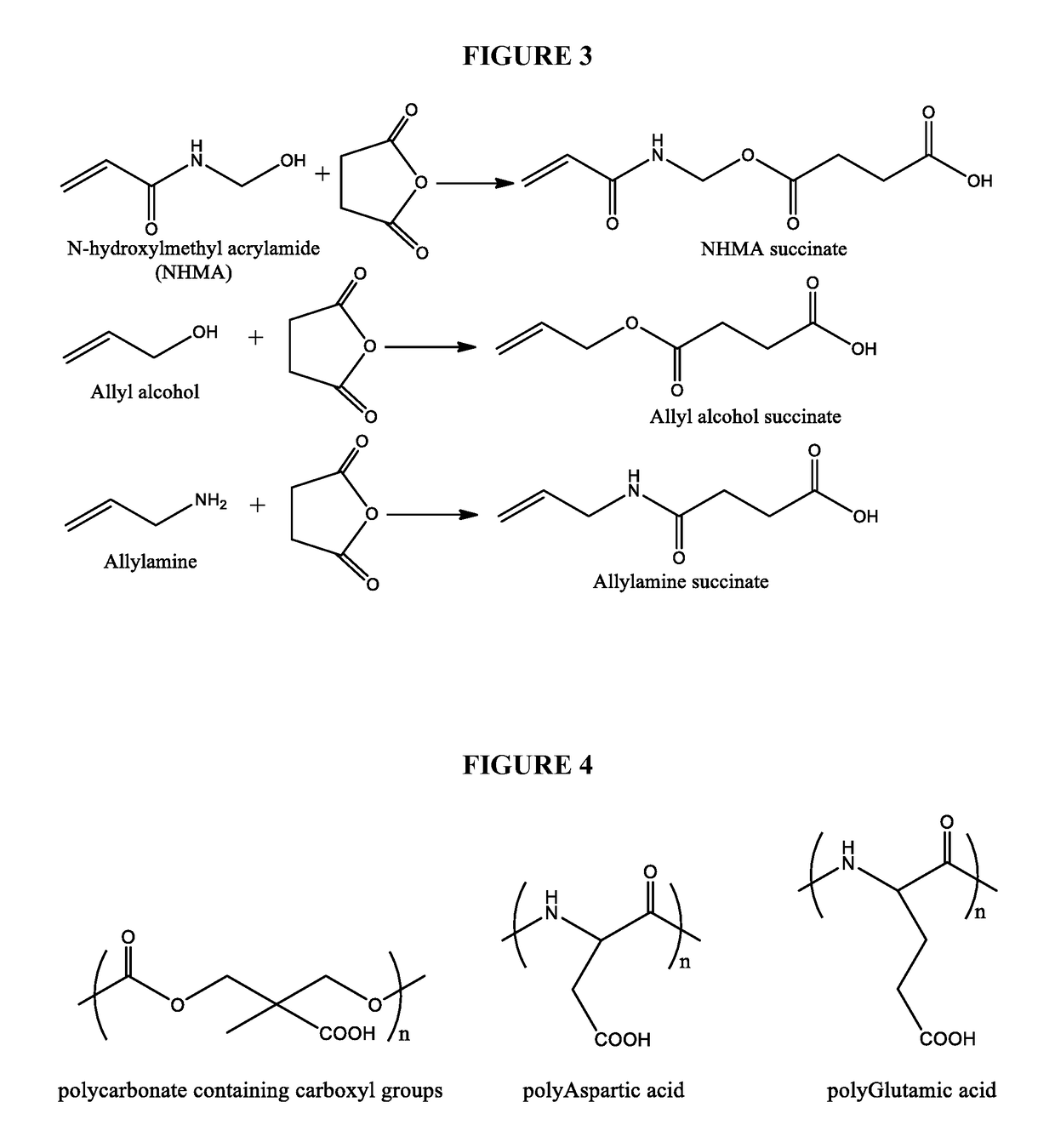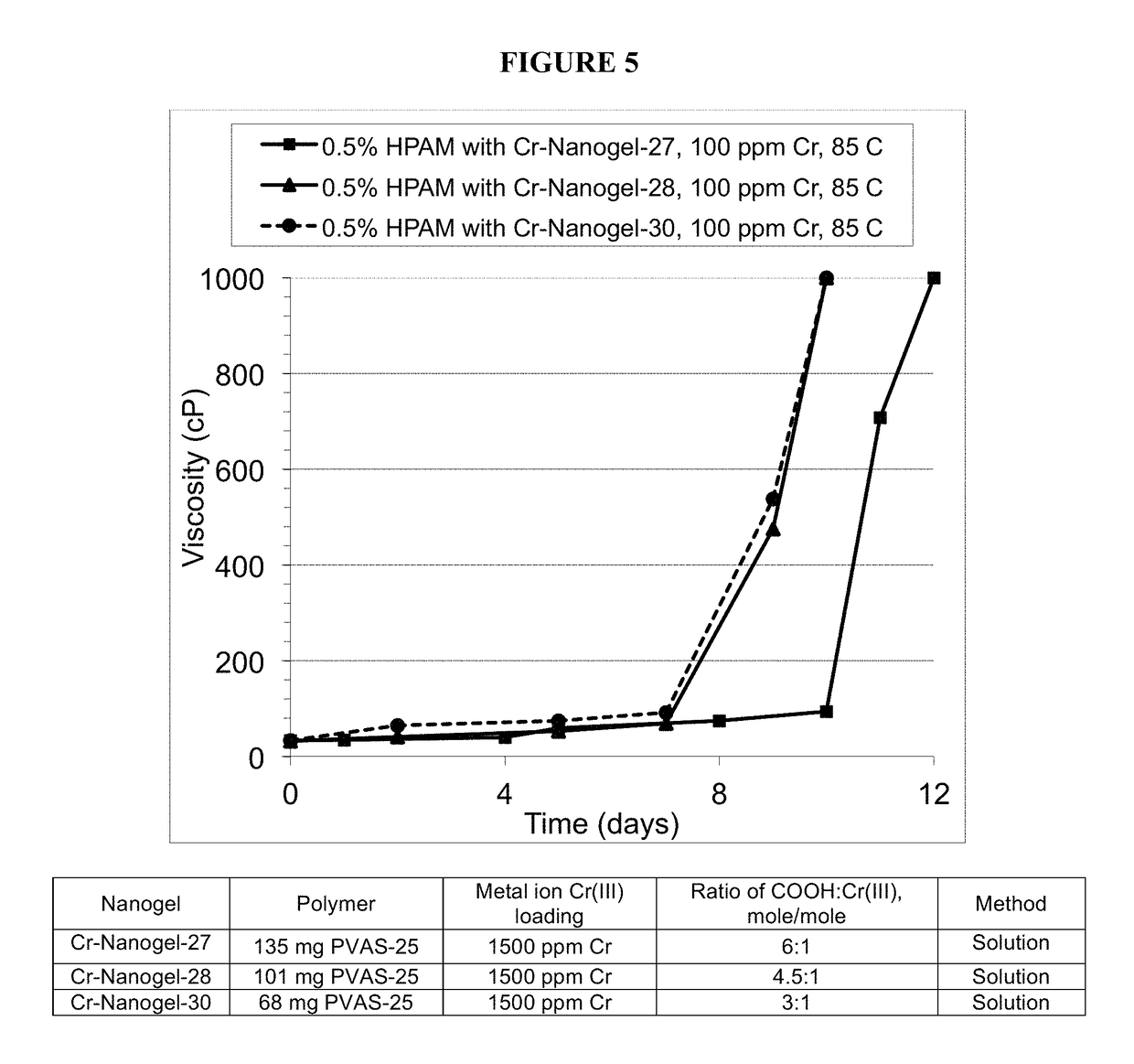Nanogels for delayed gelation
a gelling agent and nanogel technology, applied in the direction of drilling compositions, chemical instruments and processes, etc., can solve the problems of insufficient underground pressure, insufficient pressure, and as little oil as possible trapped inside the reservoir, and achieve the effect of blocking high-permeability channels
- Summary
- Abstract
- Description
- Claims
- Application Information
AI Technical Summary
Benefits of technology
Problems solved by technology
Method used
Image
Examples
Embodiment Construction
[0067]The disclosure provides novel compositions and methods, including any one or more of the following embodiments:
[0068]A degradable composition is provided, comprising a polymer having labile or releasable carboxylate groups complexed with a multivalent metal ion, said degradable composition lasting at least 5 days at 85° C. in a brine solution having 23 g / l NaCl, and thereafter degrading said composition and releasing said multivalent metal ion. Degradation is thus to be ascertained by release of the multivalent metal ion, which is ascertained by a second polymer gelling, as shown in the viscosity increase experiments described herein.
[0069]In preferred embodiments, the composition is a nanogel, but this is not an absolute requirement. Nanogels include particles of less than one micron, preferably 200-500, and most preferably 400 nm.
[0070]The polymer used to form nanogel can be made from monomers selected from the group of vinyl, allyl, styrene, and acrylamide monomers and thei...
PUM
| Property | Measurement | Unit |
|---|---|---|
| particle size | aaaaa | aaaaa |
| particle size | aaaaa | aaaaa |
| particle size | aaaaa | aaaaa |
Abstract
Description
Claims
Application Information
 Login to View More
Login to View More - R&D
- Intellectual Property
- Life Sciences
- Materials
- Tech Scout
- Unparalleled Data Quality
- Higher Quality Content
- 60% Fewer Hallucinations
Browse by: Latest US Patents, China's latest patents, Technical Efficacy Thesaurus, Application Domain, Technology Topic, Popular Technical Reports.
© 2025 PatSnap. All rights reserved.Legal|Privacy policy|Modern Slavery Act Transparency Statement|Sitemap|About US| Contact US: help@patsnap.com



